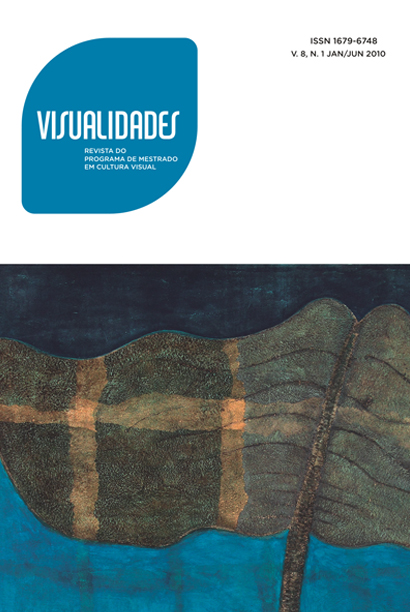Desdobramentos da escultura goiana a partir das obras de Gustav Ritter
DOI:
https://doi.org/10.5216/vis.v8i1.18237Abstract
A pesquisa tem como objetivo estudar a escultura goiana, a partir da análise das obras do escultor alemão Gustav Ritter (1904-1979), que se radicou em Goiânia em 1949. Ritter trouxe para a cidade uma visão moderna do objeto tridimensional dotado de formas abstratas. Tais características influenciaram os artistas goianos a partir da década de 1960. Nossa proposta é catalogar as obras de Gustav Ritter, estudar sua influência e participação na fundação da Escola de Belas Artes da Universidade Católica de Goiás em 1952, investigando ao mesmo tempo sua carreira de professor na cadeira de escultura do Instituto de Belas Artes da Universidade Federal de Goiás em 1957. Serão desenvolvidas pesquisas nos acervos particulares e públicos (museus e jornais) de Goiânia, além de entrevistas (ex-alunos, amigos e parentes), e pesquisa em publicações referentes à Ritter e à escultura abstrata.Palavras-chave: Tridimensionalidade, escultura moderna goiana, arte abstrata.
Downloads
Downloads
Published
How to Cite
Issue
Section
License

This work is licensed under a Creative Commons Attribution 4.0 International License .
Authors who publish in this journal agree to the following terms:
a. Authors retain the copyright and grant the journal the right of first publication, with the work simultaneously licensed under the Creative Commons Attribution 4.0 License which allows the sharing of work with acknowledgment of authorship and initial publication in this journal.
b. Authors are authorized to take additional contracts separately, for non-exclusive distribution of the version of the work published in this journal (eg publish in institutional repository or as a book chapter), with acknowledgment of authorship and initial publication in this journal.
c. Authors are allowed to publish and distribute their work online (eg in institutional repositories or on their personal page) after the initial publication in this journal, as this can generate productive changes, as well as increase the impact and citation of the published work ( See The Effect of Free Access).
Every effort has been made to identify and credit the rights holders of the published images. If you have rights to any of these images and have not been correctly identified, please contact the Visuals magazine and we will publish the correction in one of the next issues.






